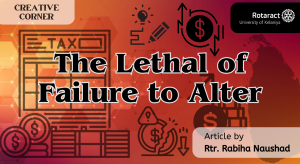NFT is a unique digital token stored on a blockchain. Each token is linked to a specific digital asset. An image, video, or audio file containing information about its ownership, authenticity, and transaction history. Unlike other cryptocurrencies that are convertible and have equivalent value, NFTs are not fungible. This means that each token is unique and cannot be duplicated or replaced. This makes NFTs ideal for representing unique digital assets such as original artwork, collectibles, and even virtual real estate.
NFTs are created and sold on blockchain platforms such as Ethereum, allowing artists and collectors to exchange digital assets without middlemen. To create an NFT, an artist first creates a digital artwork or asset, a painting or a video. A smart contract, a self-executing program that runs on the blockchain, is then used to create unique tokens that represent assets. The tokens are then added to the blockchain and can be bought and sold by collectors using cryptocurrencies.
NFTs have become popular for several reasons. First, artists can monetize their digital works in ways that were previously impossible. Content such as digital art and music has traditionally been difficult to sell because it can be easily copied and distributed without permission. NFTs solve this problem by creating a digital certificate of ownership that is stored on the blockchain and verifiable by anyone. This gives artists the opportunity to sell their digital assets as original and unique works rather than copies or reproductions.
Second, NFTs appeal to collectors looking for new ways to invest in art and other assets. Unlike traditional works of art, which are difficult to authenticate and evaluate, NFTs come with auditable records of ownership, provenance and transaction history. This makes them more attractive to collectors looking to invest in something unique and valuable.
NFTs are part of a larger trend towards decentralization and blockchain technology. By using blockchain platforms to create and trade digital assets, NFTs offer a way to bypass traditional middlemen such as galleries, auction houses and art dealers. This has the potential to disrupt the art world and democratize access to art and other cultural expressions.
The rise of NFTs has had a major impact on the art world. On one hand, it has created new opportunities for artists to monetize their digital work and reach a global audience. On the other hand, it raises questions about the value of digital art and the role of traditional art institutions in a decentralized world.
One of the biggest impacts of NFT is the digital art market. Several high-profile sales of his NFTs have made headlines in recent months, including digital artwork by artist Beeple that sold for $69 million at Christie’s auction house. These sales spotlight the value of digital art and the potential for artists to make a lot of money from their work. This has led to increased interest in his NFT market from artists, collectors, and investors, who see it as an exciting new art and investment opportunity.
Another impact of NFTs on the art world is the decentralization of the art market. Traditionally, the art world has been dominated by galleries, auction houses and art dealers, who have controlled the market and set prices for works of art. NFTs allow artists to sell their work directly to collectors, bypassing traditional middlemen and gaining control over their careers. This has the potential to democratize the art world and give artists more autonomy and power.
However, this decentralization also calls into question the role of traditional art institutions in a world where artists can sell their work directly to collectors. Will galleries and museums lose their relevance when artists come to rely on their NFTs to sell their work, or will they find new ways to adapt to changing environments and stay relevant? These are questions the art world must grapple with as NFTs continue to grow in popularity.
Finally, the rise of NFTs has sparked a broader cultural debate about the value of digital art and the nature of ownership in the digital age. As digital technology becomes more prevalent, the question of who owns and controls digital works becomes more pressing. NFTs offer a new way of thinking about ownership and value in a digital context, but they also raise questions about the nature of art and the role it plays in our lives.
The rise of NFTs has changed the way we think about the value of art, property and digital works. It has created new opportunities for artists to monetize their work, bypass traditional middlemen and take control of their careers. It also raised questions about the role of traditional arts institutions in a decentralized world and sparked a broader cultural debate about the nature of art and property in the digital age. It will be interesting to see how the world evolves and adapts to this new and exciting development.



